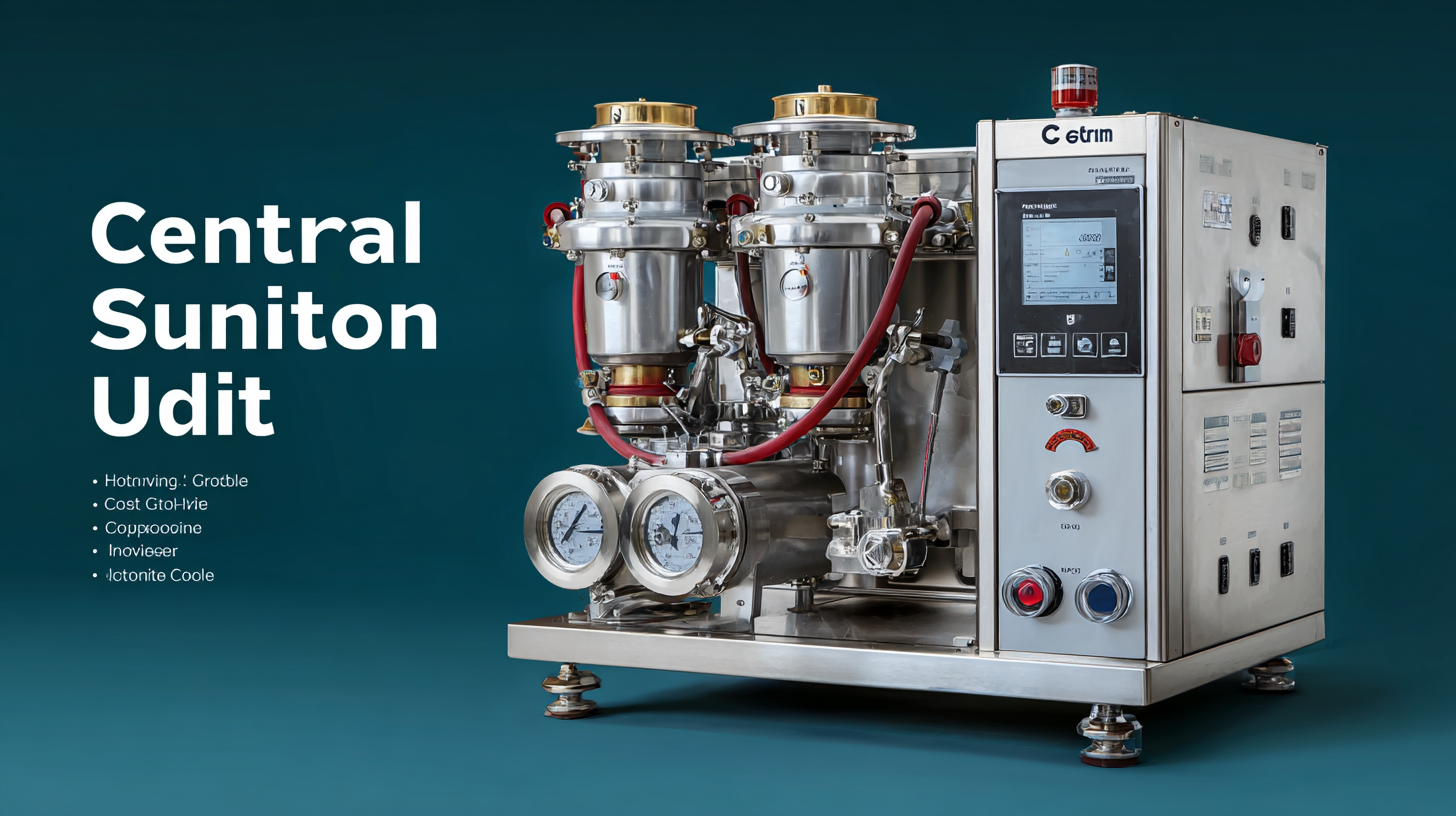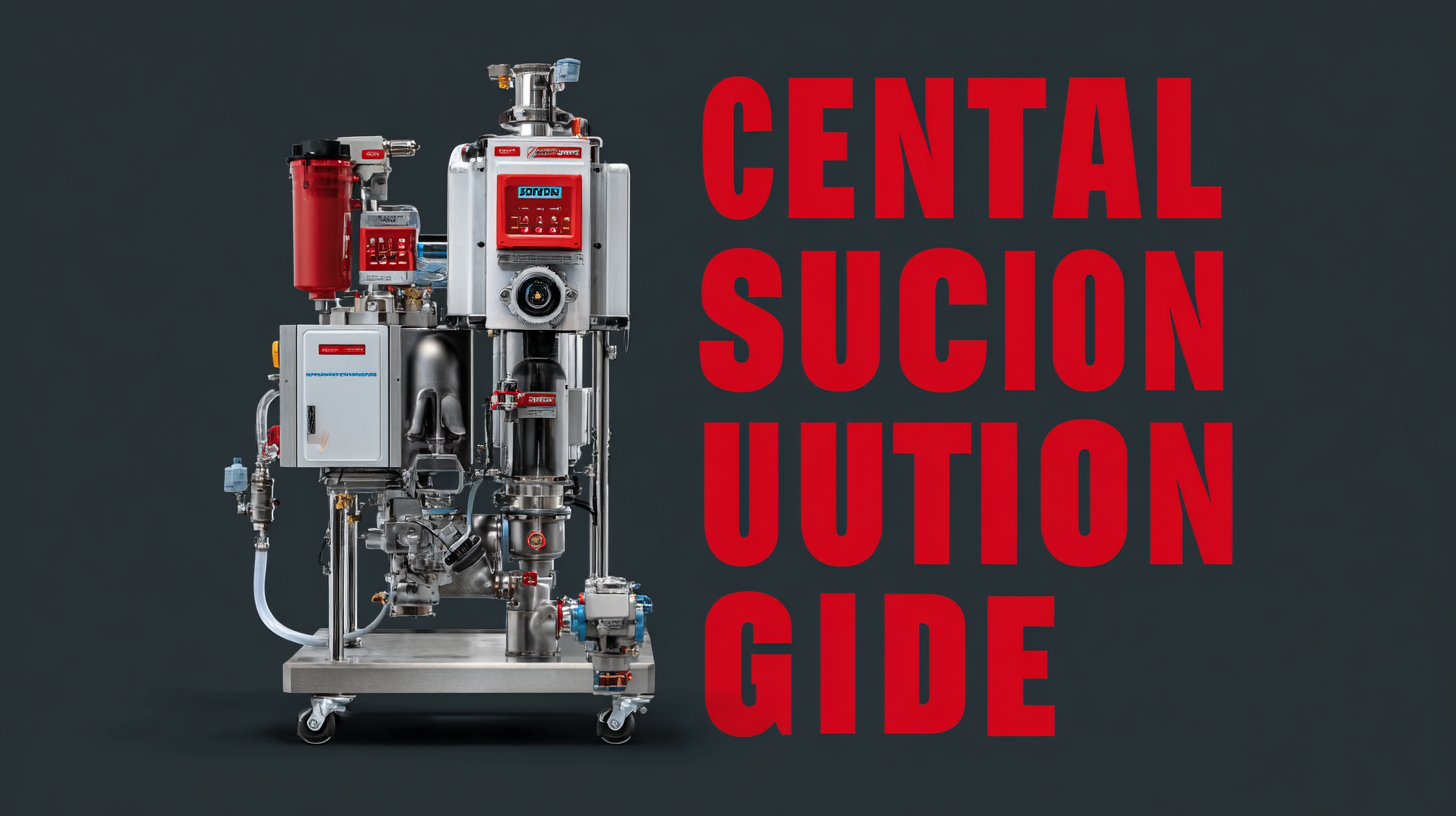In today's fast-paced business environment, selecting the right equipment is crucial for operational efficiency, and one essential tool that cannot be overlooked is the Central Suction Unit. These centralized systems play a pivotal role in maintaining cleanliness, enhancing productivity, and ensuring the safety of both employees and clients in various industries.

As a global partner committed to quality manufacturing in China, we understand the importance of investing in robust and reliable suction solutions tailored to your specific business needs. This ultimate guide will empower you to make informed decisions when choosing the best Central Suction Unit for your operations, offering insights into key features, industry-specific requirements, and the benefits of opting for high-quality manufacturing.
Join us as we delve into the essentials of selecting a Central Suction Unit that not only meets your operational demands but also aligns with your long-term business goals.
Central suction units are becoming increasingly vital in modern businesses, particularly in environments where cleanliness and air quality are paramount. These systems facilitate a streamlined approach to managing dust and debris, which is essential in industries such as manufacturing, healthcare, and food processing. By minimizing airborne contaminants, central suction units not only improve the working conditions for employees but also ensure compliance with health and safety regulations.
Investing in a central suction unit can significantly enhance operational efficiency. Unlike traditional vacuum systems that require manual handling and frequent emptying, central systems enable a more automated process. This translates to reduced downtime for maintenance, allowing staff to focus on their core tasks. Moreover, central suction units can be designed to integrate seamlessly with existing workflows, leading to enhanced productivity and a cleaner workspace. Understanding the importance of these units can guide businesses in making informed decisions and choosing the right system that aligns with their specific needs.
| Unit Type | Suction Power (in HPA) | Noise Level (dB) | Energy Consumption (kW) | Maintenance Frequency (Months) | Ideal Business Size |
|---|---|---|---|---|---|
| Compact Unit | 200 | 60 | 1.5 | 12 | Small Businesses |
| Standard Unit | 400 | 70 | 2.0 | 6 | Medium Businesses |
| Heavy-Duty Unit | 600 | 80 | 3.0 | 4 | Large Businesses |
| Industrial Unit | 800 | 90 | 5.0 | 3 | Manufacturing |
When selecting a central suction unit for your business, several critical features should be prioritized to ensure efficiency and efficacy. One of the primary aspects to consider is the suction capacity, typically measured in CFM (cubic feet per minute). According to a recent industry report by the American Vacuum Society, a central suction unit should have a suction capacity between 400 to 1200 CFM, depending on the size and operational demands of your facility. This range ensures optimal debris removal, significantly enhancing workplace cleanliness and productivity.
Another vital feature is the filtration system. High-efficiency particulate air (HEPA) filters are recommended since they can trap up to 99.97% of particles as small as 0.3 microns, which is crucial in environments that require strict cleanliness levels, such as healthcare settings. A report from the National Air Filtration Association indicates that businesses employing HEPA filtration can reduce airborne contaminants by approximately 50%, leading to improved employee health and reduced sick days. Additionally, considering ease of maintenance and the availability of replacement parts can significantly influence the long-term performance and sustainability of your central suction unit.
When selecting a central suction unit for your business, understanding the size of your operations and specific requirements is crucial. Larger businesses typically generate more waste and require systems with higher capacity and efficiency. Assessing the volume of material you need to handle will help determine the size and power of the unit necessary for effective performance. Additionally, consider the layout of your facility; a complex design may require multiple suction points, which could influence your choice of unit.
Specific needs vary significantly across different industries. For example, a healthcare facility may require advanced filtration systems to maintain stringent hygiene standards, while a manufacturing plant might prioritize robustness and durability to handle heavy debris. Identifying the unique demands of your workspace will aid in selecting features such as noise levels, ease of maintenance, and suction strength. By thoroughly evaluating these factors, you can ensure that you choose a central suction unit that aligns perfectly with your business operations, enhancing efficiency and productivity.
This chart illustrates the number of recommended central suction units based on the size of your business. Smaller businesses typically need one unit, while larger enterprises may require more to efficiently meet their suction needs.
When selecting a central suction unit for your business, it’s crucial to conduct a comparative analysis of the leading models available on the market. This process involves evaluating key features such as suction power, noise levels, maintenance requirements, and overall energy efficiency. For instance, some models may offer quieter operation but compromise on suction strength, which could be a significant consideration for industries with high debris loads. Assessing customer feedback on durability and ease of use can also provide insights into long-term performance.
In addition to performance metrics, it’s essential to consider technological advancements in the latest central suction units. Many manufacturers now incorporate smart technology that allows for remote monitoring and control, enhancing operational efficiency. Comparing warranties and customer support services can also influence your decision. Investing in a unit that not only meets your current needs but also has the capacity for scalability will ensure that your suction system can grow alongside your business demands.

As businesses increasingly prioritize efficiency and hygiene, central suction technology continues to evolve, bringing new trends that promise to enhance operational effectiveness. One significant trend is the integration of smart technology into central suction systems. These advancements enable real-time monitoring and diagnostics, allowing businesses to address issues proactively and optimize performance. Companies can expect to mitigate downtime and reduce maintenance costs by harnessing data analytics and IoT features, ultimately improving their overall productivity.
Another emerging trend is the focus on energy efficiency and sustainability. Newer models of central suction units are designed to consume less power without sacrificing performance, thus reducing a business's carbon footprint. As regulations tighten around environmental impact, choosing an energy-efficient suction unit not only aligns with corporate responsibility goals but can also lead to substantial cost savings over time. This shift toward sustainability, combined with technological integration, marks a significant change in central suction systems, providing businesses with powerful tools to meet their operational needs and adapt to future challenges.

